Check out the best web front-end frameworks of 2023 when starting your project. Why is choosing the right tool important?
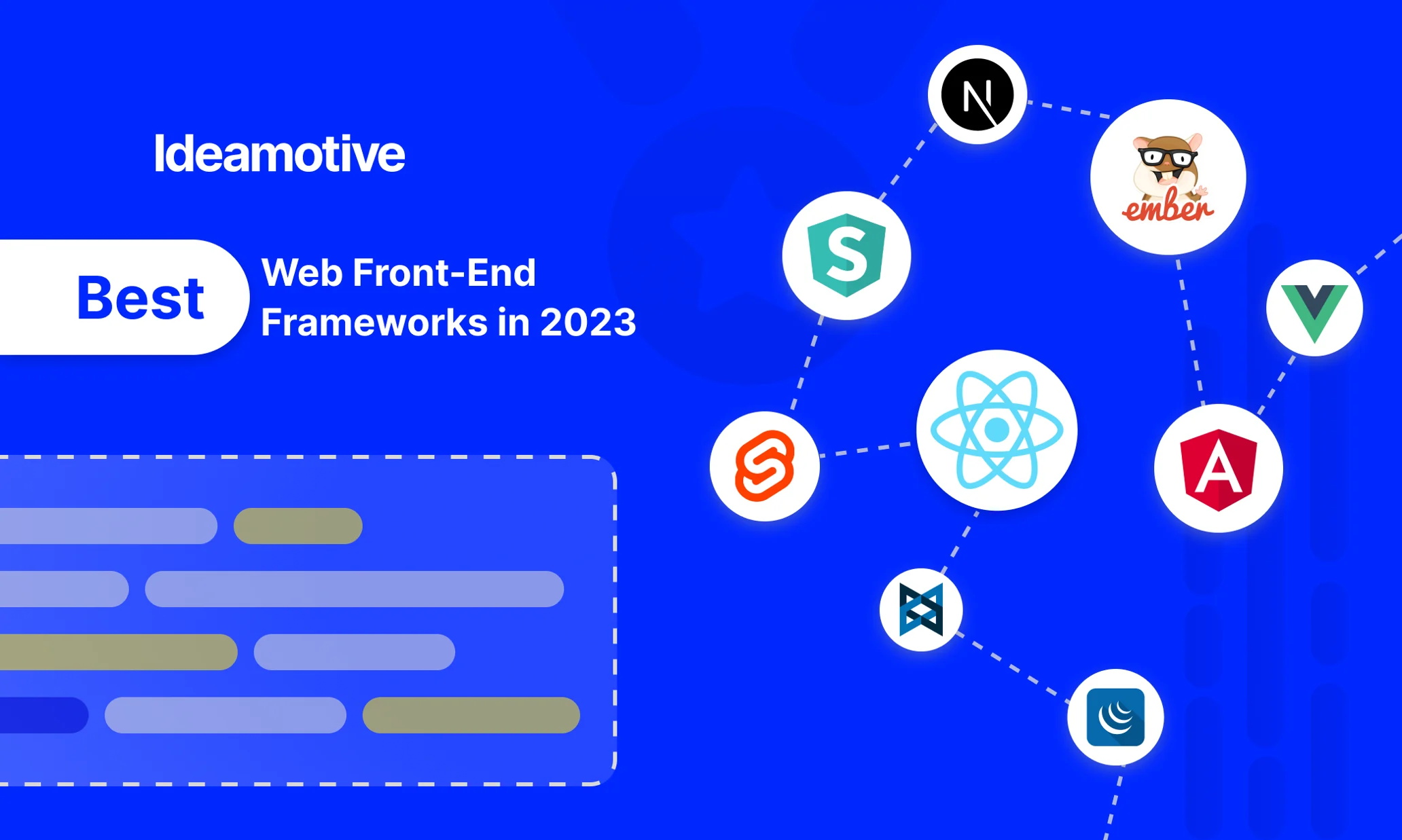
Front-end developers use front-end frameworks to simplify their work. These packages typically provide reusable code modules, systematic front-end technologies, and pre-built interface blocks. This allows teams to create sustainable web applications and user interfaces faster and easier without having to write every function or object from scratch.
When developing web applications, it is necessary to use modern tools. Numerical Technology editor here lists 9 popular front-end frameworks in 2023:
frame
React.js
ReactJS is a declarative, efficient and flexible JavaScript library for building reusable UI groups. React uses the classic model-view-controller (MVC) architecture and is an open source, component-based front-end library that is only responsible for the view layer of the application. Originally developed and maintained by Facebook, it was later used in products such as WhatsApp and Instagram.
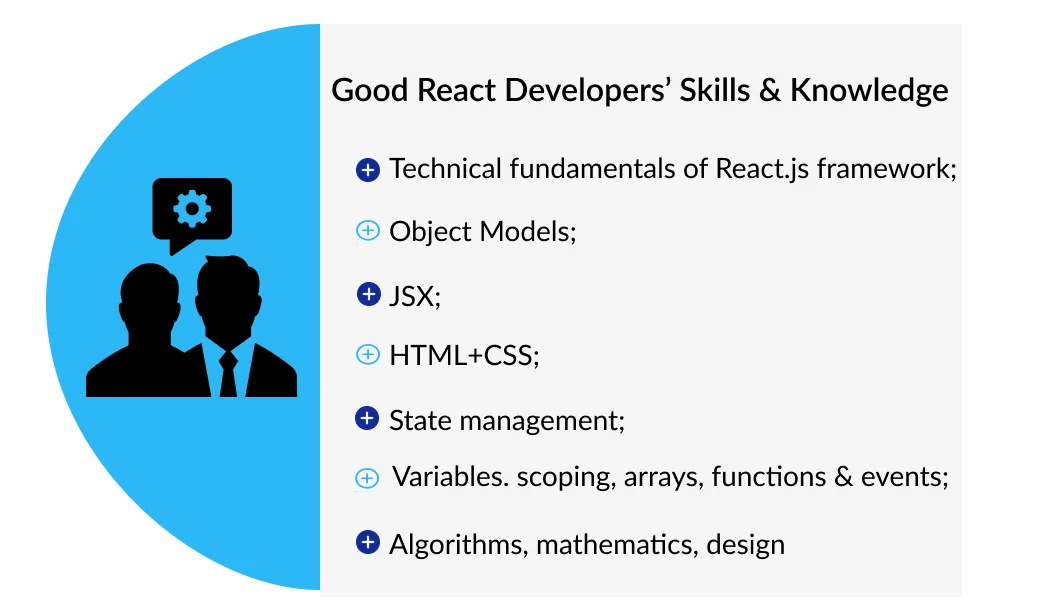
The main goal of ReactJS is to develop the user interface (UI) to increase the speed of the application. It uses virtual DOM (JavaScript Objects), which improves the performance of the application. JavaScript virtual DOM is faster than regular DOM. ReactJS can be used on client and server side as well as other frameworks. It uses components and data patterns to improve readability and help maintain larger applications.
advantage:
- React has a component-based architecture;
- Use virtual dom for efficient rendering;
- Extensive library of third-party software packages;
- easy to learn and use;
- Large dynamic community support;
shortcoming:
- Steep learning curve for beginners
- Knowledge of javascript and JSX is required
- Jsx makes dubbing more complex and difficult
- Need additional coding tools
Vue.js
Vue.js is an open-source progressive JavaScript framework for developing interactive web user interfaces and single-page applications (SPAs) by using HTML, CSS, and JavaScript to build application interfaces. The goal of Vue.js is to provide the benefits of reactive data binding and composable view components with the simplest API possible.

Vue.js is a high-level, declarative, and functional programming language that is effortless to learn and use. Vue has a wealth of development tools to design a complete application, including animation, material design, and rich components. Additionally, the application is JavaScript-based, cross-platform, and framework-agnostic.
Vue.js uses popular web standards and is compatible with Javascript environments such as Node, V8, and Webpack.
advantage:
- Easy for novices to learn and use;
- Lightweight and fast, enabling rapid development;
- Has a modular architecture and is easy to expand;
- Supports two-way data binding, allowing efficient dom updates;
shortcoming:
- slow rendering;
- Limited adoption compared to other front-end JavaScript frameworks;
- Not suitable for large-scale application;
- Additional tools and plugins are required to perform the required functions;
Angular
Angular is the successor of Angular JS, written in JavaScript. Despite their similar names, they are different frameworks. AngularJS is version 1.x. The framework has been around since 2009 and is currently in long-term support mode with no more updates. The new version is Angular or Angular 2.x released in 2016. It has a different architecture and can write on it with TypeScript and JavaScript.
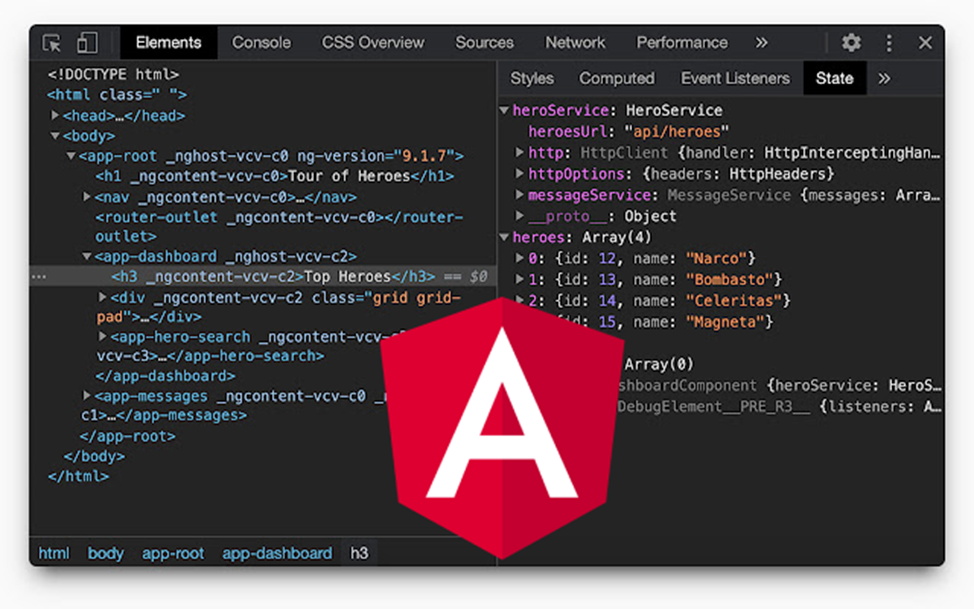
advantage:
- Component-based architecture;
- Two-way data binding;
- directives and dependency injection functions;
- Highly testable/reusable/manageable applications;
- Improve server performance;
- Strong community, good training materials, etc.;
- Backed by Google;
shortcoming:
- Difficult for beginners, overwhelming for smaller teams;
- limited search engine optimization capabilities;
- Bloated code and large;
Svelte
Svelte is neither a framework nor a library, but a compiler. It is an extension of the JavaScript language that offers a completely different approach to web interface development. Svelte differs from more traditional React and Vue-style solutions in terms of code organization and its transition to a "ready-to-use product".
Svelte allows you to build faster, less resource-intensive applications while simplifying the development process. Maybe that's why it's becoming more and more popular every day.
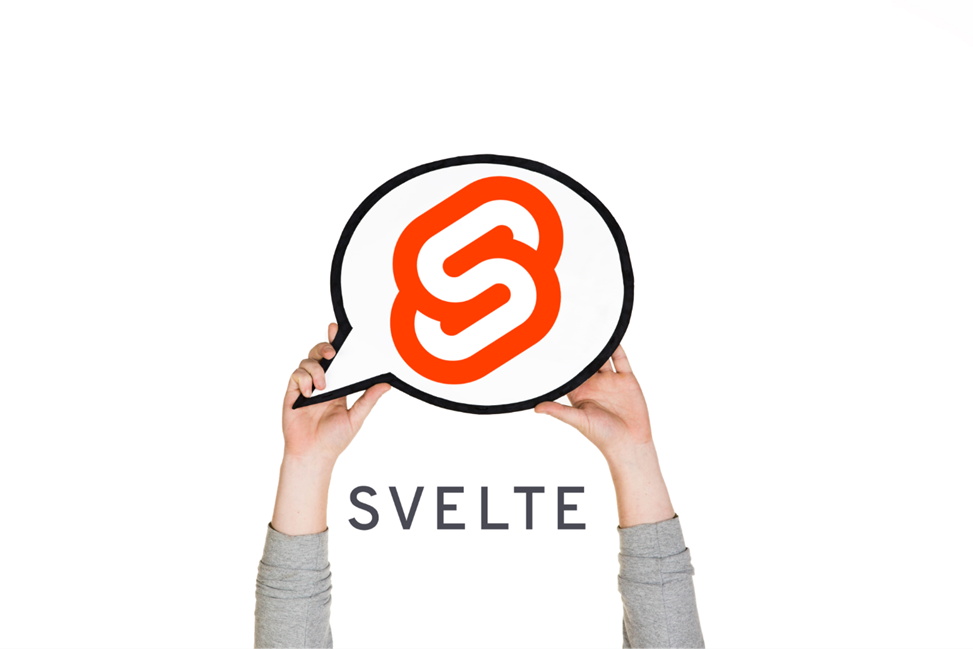
Since its launch in 2016, it has grown in popularity dynamically. It has become one of the best front-end frameworks in 2023: at least 10-15% of front-end developers are optimistic about its use. More than 3K websites are developed on SVETLE.
Svelte is a component-based open-source JavaScript framework, written in Typescript, that provides a lightweight front-end development option.
advantage:
- One of the fastest front-end frameworks with fast responsiveness;
- Component-based architecture with minimal code;
- Lightweight, simple, use existing JS library;
- no virtual DOM;
- Search Engine Optimization;
shortcoming:
- immature community and limited ecosystem;
- Lack of support material and limited tools;
- Some doubts about scalability and coding nuances;
jQuery
jQuery is written in JavaScript, a popular language for web applications and interfaces. The library is cross-platform and cross-browser. This means it is possible to develop applications that work on any operating system or browser. Released in 2006, jQuery is one of the oldest open-source JavaScript front-end frameworks free and licensed from MIT. Even though it is a real veteran in the market, it is still one of the best front-end frameworks in 2023 because it is almost relevant to the current development conditions.

advantage:
- beginner friendly;
- Easy to use;
- Compatible with all major web browsers;
- Large selection of plugins;
- a strong and well-developed community;
- Provide a variety of DOM manipulation tools;
- Search Engine Optimization;
shortcoming:
- Huge library available for import;
- Apps built with it may be a bit slower than native apps;
- DOM API is considered obsolete;
- missing data layer;
Ember
Ember is an MVVM open source JavaScript web framework released in 2011 for building modern web applications. Use the MVC (Model-View-Controller) architectural pattern. The framework is relatively stable and can seamlessly meet various needs.
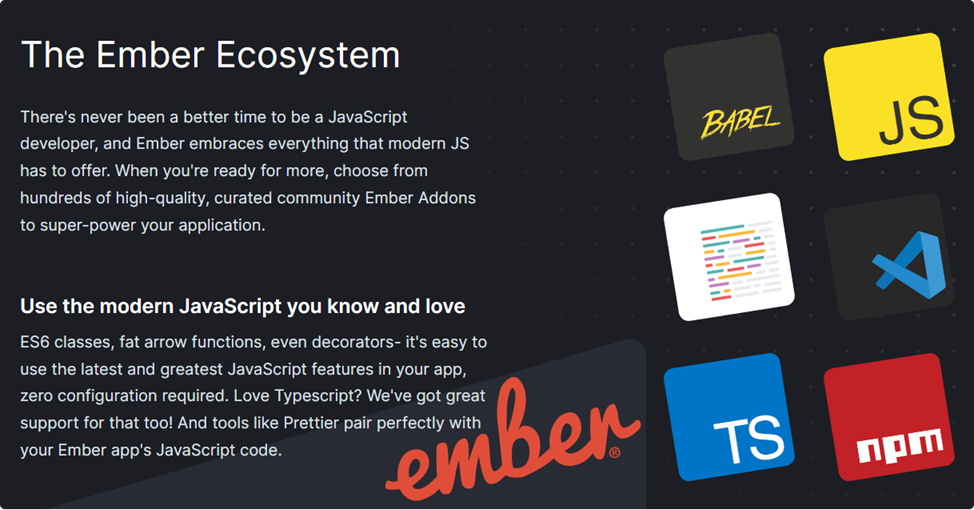
Ember has a huge ecosystem and its advanced templates allow developers to code less. It has many powerful features and components, including its routing and testing tools.
advantage:
- server-side rendering;
- consistent documentation;
- Native testing and debugging tools;
- Widget-based component approach;
- Two-way data binding;
- URL-centric methods;
- well-organized community;
- JavaScript and TypeScript support;
shortcoming:
- A bit tricky for beginners;
- Not suitable for small projects;
- heavyweight;
- Lack of component reusability;
- Little or no customization options;
Backbone.JS
BackboneJS is a free and open source lightweight JavaScript library developed in 2010 by Jeremy Ashkenas, author of CoffeeScript. It is available under the MIT Software License. Allows developing and building client applications that run in web browsers. It provides an MVC framework that abstracts data as a model, DOM as a view and binds the two using events.

advantage:
- Extensible, more than 100 available extensions;
- Fewer requests to HTTP;
- beginner friendly;
- Small size, about 7.6kb after minification and compression;
- Well organized, detailed instructions;
- store data in the model, not in the DOM;
shortcoming:
- Lack of support for two-way data binding;
- Architecture is sometimes unclear;
- Requires writing more code (eg, more boilerplate code);
- Many developers feel that it is slowly becoming obsolete;
Semantic UI
Semantic UI—a fully semantic front-end interface development framework, powered by LESS and jQuery, a CSS framework developed by full-stack developer Jack Lukicthis. Use CSS and jQuery to build an excellent user interface, the code is very readable and understandable, the interface is simple and beautiful, close to the style of bootstrap, based on jquery, suitable for responsive layout, and provides some basic templates.
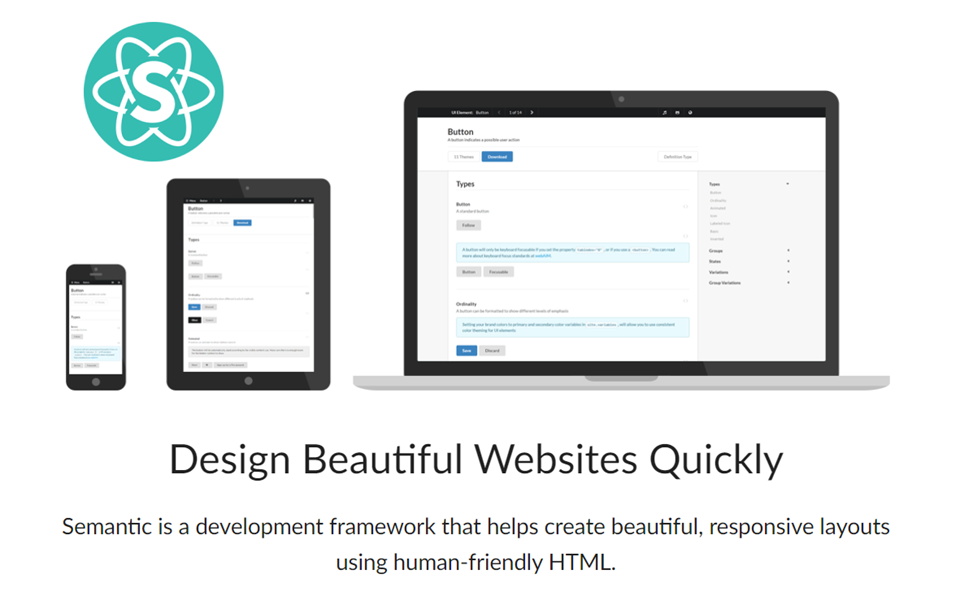
advantage:
- Self-explanatory organization code;
- Rich and responsive component UI;
- Integration with React, Angular, Meteor, Ember;
- a wide range of topics;
shortcoming:
- The community is relatively small;
- Not suitable for beginners with limited JavaScript knowledge;
- few recent updates;
- Knowledge of custom configuration development is required;
Next.js
Next.js is a lightweight React server-rendered application framework, but with some tweaks to go beyond standard SPA applications. It helps simplify the development of multi-page and hybrid web applications. In addition, Next.js provides developers with other valuable features, especially related to working with backends.
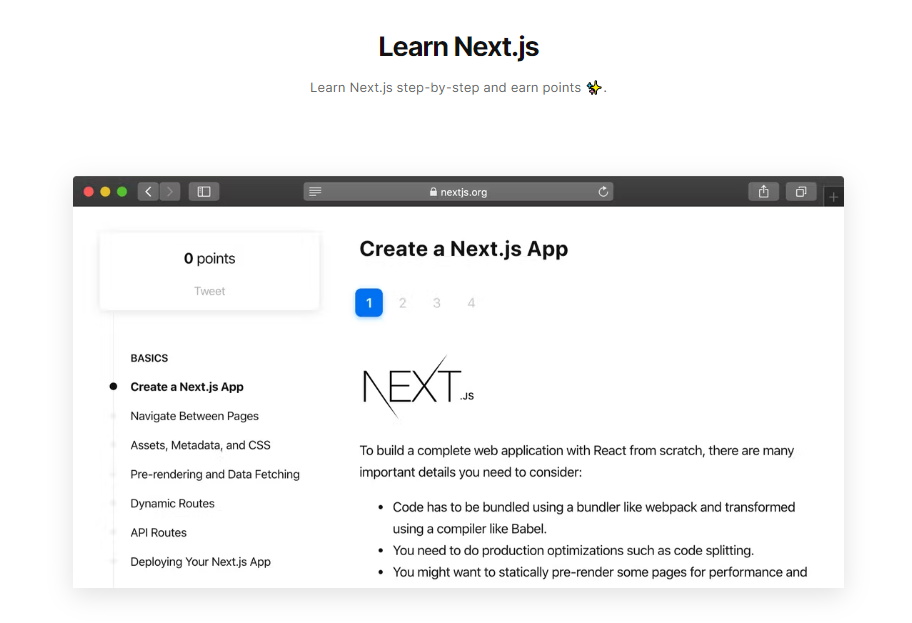
advantage:
- Support SSR;
- Built-in server-side rendering;
- Support exporting static websites;
- easy to learn;
- Page automatic code splitting;
- Simplify the creation of internal APIs and API endpoints;
- Support for routing pages and CSS, JSX and TypeScript files;
- Has a plugin for using Next.js;
- Supports most third-party plugins for React.js;
shortcoming:
- There is only one way to handle routing, it cannot be customized;
- limited to its file-based router;
- Dynamic routing is only possible when used with a NodeJS server;
Summarize
The wide variety of top front-end frameworks about 2023 on the market opens up countless opportunities for growth. What's more, UI engineers can choose from top innovative products. JavaScript UI frameworks like React, Angular, and Vue have taken the lead in market share. They have received strong support from the community and have been chosen for their unique features and flexibility.
Tips
Sovit3D is an Internet of Things visualization PaaS development platform, based on the JavaScript language 3D graphics engine, which provides rich presentation forms and visual effects for Web visualization, helping software development companies and solution providers to easily build 3D visualization interfaces. The platform focuses on visual application fields such as production control of industrial digital twins and monitoring operation and maintenance of smart cities. The modular configuration form of products can meet the construction of all-factor smart scenarios. It is widely used in various fields such as electric energy, water conservancy, Internet of Things, industrial Internet, smart city, smart medical care, smart agriculture, IT operation and maintenance, etc.
Sovit3D platform adopts B/S architecture, based on WebGL drawing technology standard, provides 3D visualization industry components based on Web browser, supports the latest technologies such as HTML5/SVG, and can be easily browsed and debugged on the browser. Create large-screen visualization applications for developers that conform to user habits, including 2D chart analysis, 3D architectural real scenes, 3D industrial equipment models, etc. Command issuing and other functions.